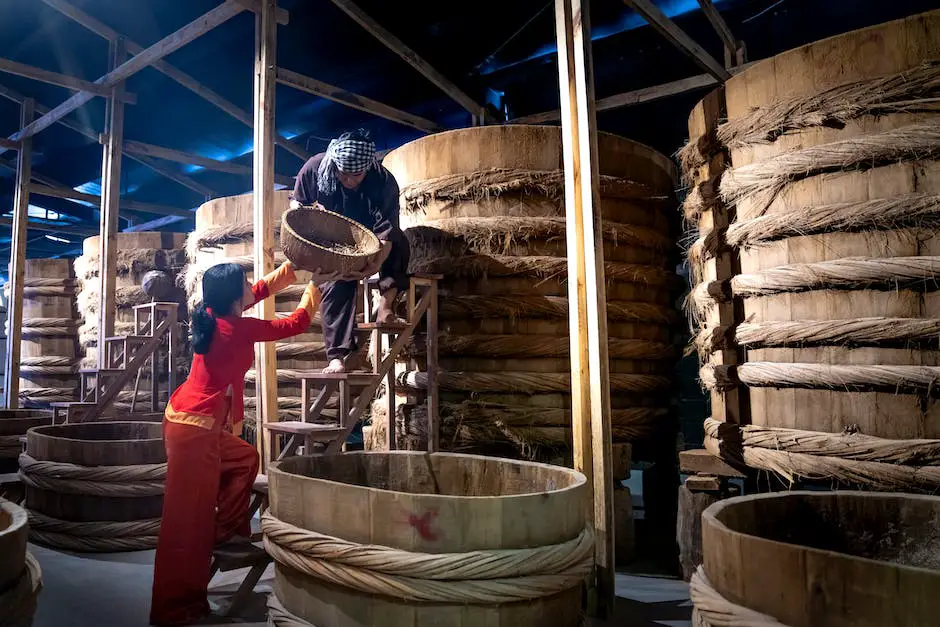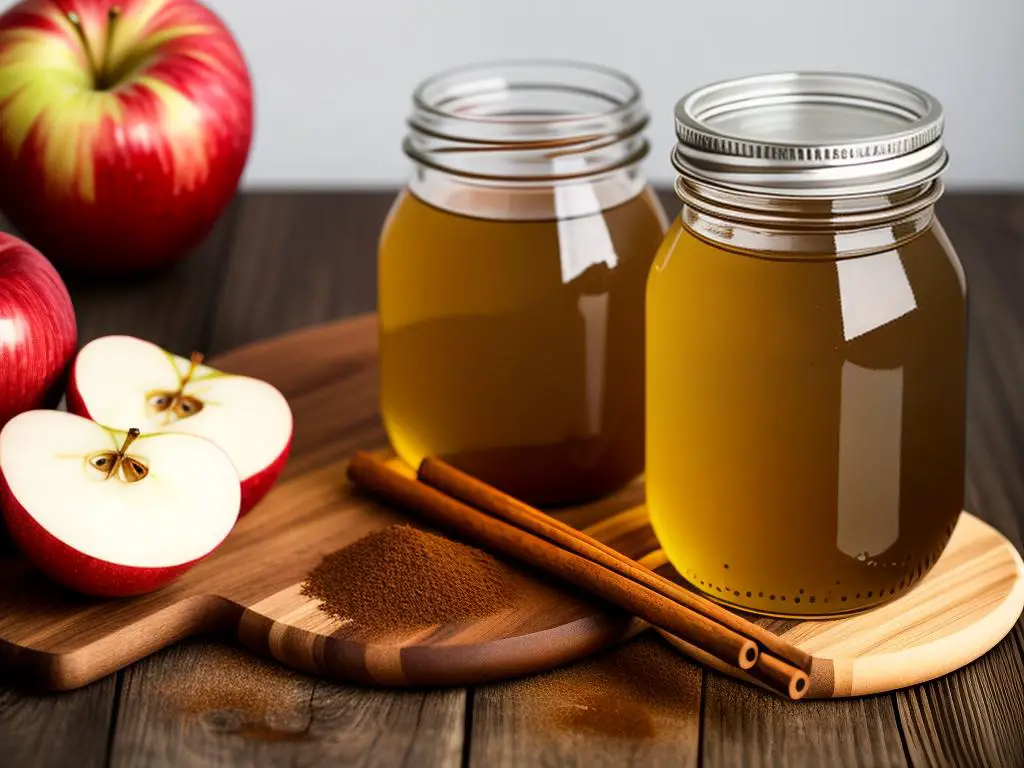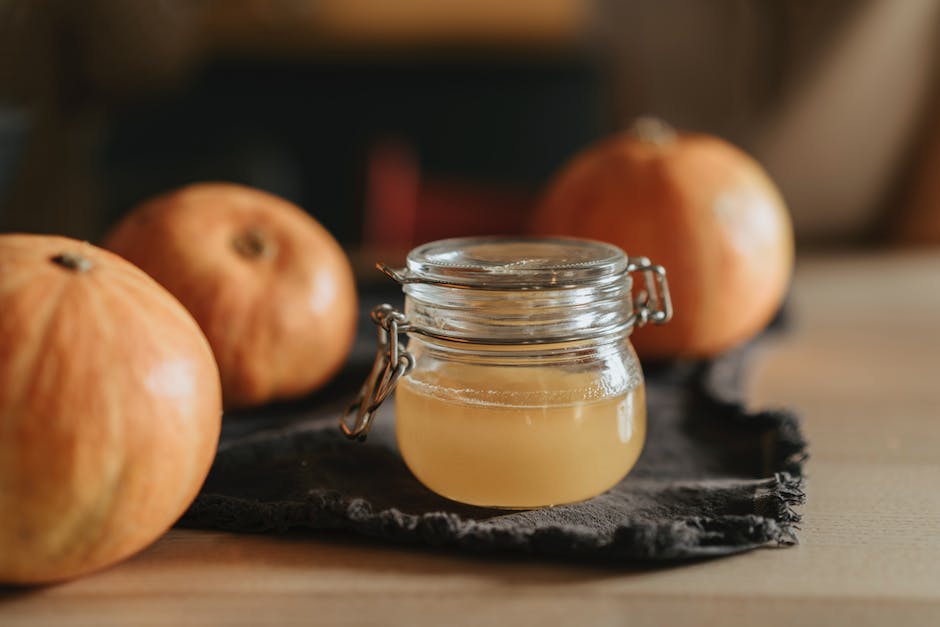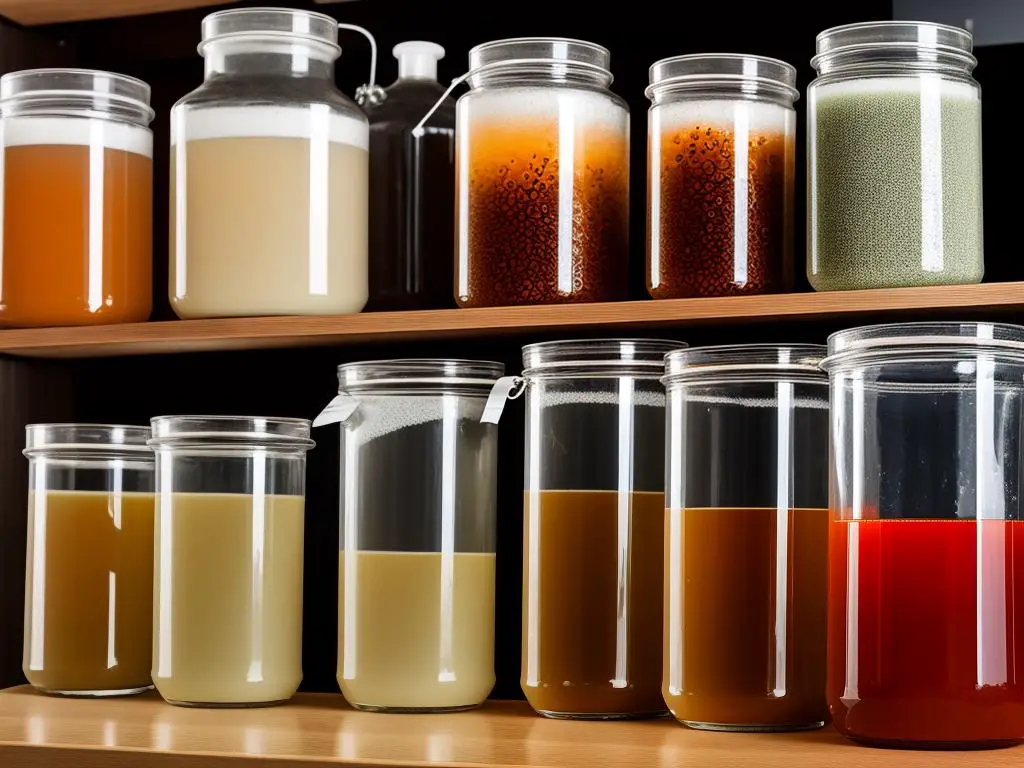The art and science of fermentation can evoke a captivating curiosity, especially when harnessed at home to create familiar end products like apple cider vinegar. This practice, which finds its allure in the transformative nature of such a simple process, can however be fraught with challenges, including the unappetizing occurrence of mold. The key to successfully creating homemade apple cider vinegar, free of any unsightly and harmful mold, lies in understanding the biological underpinnings of the fermentation process. By exploring the conditions conducive to yeast and bacteria growth, we illuminate the pathway not only to a superior quality apple cider vinegar but also to an effective mold prevention strategy.
Understanding the Basics of Fermentation
Understanding the Fundamentals: The Science Behind Fermentation
Fermentation is an age-old process that humans have implemented for thousands of years to preserve food, enhance flavor, create alcoholic beverages, and even produce medications such as antibiotics. At its core, fermentation is a natural metabolic process that converts sugar to acids, gases, or alcohol. This process occurs when yeast and bacteria metabolize the sugar into other compounds.
In the case of apple cider vinegar, yeast consumes the sugars in the apple juice, producing alcohol and carbon dioxide. This initial process is also known as fermentation. Next, specific bacteria (Acetobacter species) convert that alcohol into acetic acid, leading to the creation of vinegar.
Creating the Environment: Yeast and Bacteria in Action
For fermentation to occur effectively, certain conditions are necessary. Both yeast and bacteria perform optimally in warm, moist, and dark environments. The ideal temperature range is between 70°F and 75°F (21-24°C). Moreover, sufficient access to sugar in the form of carbohydrates is essential for the yeast and bacteria to undergo glycolysis, the process of breaking down sugar.
Additionally, pH plays a critical role in the health and activity of yeast and bacteria. A slightly acidic environment helps favor the growth of yeast and bacteria which contribute to the production of apple cider vinegar, while simultaneously inhibiting the growth of undesirable microorganisms.
Opposing Forces: The Battle with Mold
While yeast and bacteria thrive under certain conditions, so do other organisms like mold. Mold is a type of fungus that develops from airborne spores. It tends to grow in warm, damp, and humid conditions. Essentially, the same environments that favor yeast and bacteria also provide a suitable home for mold, which can present a problem in the production of apple cider vinegar.
Preventing Mold Formation: Safety Measures in Apple Cider Vinegar Production
To prevent mold growth in homemade apple cider vinegar, it is crucial to maintain strict sanitation and proper air circulation. All equipment and containers used in the process should be thoroughly cleaned. Vinegar making should take place in a well-ventilated space to prevent the concentration of moisture that mold spores need to germinate.
Furthermore, during the fermentation process, it is essential to cover your apple cider vinegar with a breathable material such as a coffee filter or cheesecloth, and secure it with a rubber band. This prevents mold spores from entering while still allowing necessary air circulation.
Another crucial step is to regularly check your fermenting mixture for any signs of mold. If you do find mold, it’s best to discard the entire mixture as the mold spores can contaminate even the parts of the mixture they aren’t visible in.
With a fundamental understanding of the science behind fermentation, the ideal growth conditions for yeast and bacteria, the caution needed to prevent mold, and the role of cleanliness and air circulation, you are now equipped to create your own mold-free, homemade apple cider vinegar.

Steps to Making Mold-Free Homemade Apple Cider Vinegar
Step-by-Step Process to Making Mold-Free Homemade Apple Cider Vinegar
Making homemade apple cider vinegar (ACV) not only reduces waste, but it also allows you to control quality and taste. However, a common challenge in this process is preventing mold growth. Here are detailed steps on how to make homemade apple cider vinegar while avoiding mold formation.
The Ingredients
- Apples
- Sugar
- Water
Choose organic apples for all-rounded quality. Late season, sweet apples like Braeburn, Fuji, or Honeycrisp are ideal as they have high sugar content that aids in the fermentation, but any variety will work.
Raw organic cane sugar is recommended due to its unrefined nature. The quantity may vary, but for a general rule, use one tablespoon per one cup of water.
Always opt for chlorine-free water as chlorine can hinder the fermentation process.
The Equipment
- Glass or Ceramic Container
- Cheesecloth or Paper Coffee Filters
Use a wide-mouthed, glass or ceramic container. Plastic and metal containers are not suitable as they can react with the vinegar.
You will need these to cover the vessels during fermentation. These allow the vinegar to breathe while keeping out fruit flies and bacteria.
The Preparation
- Clean thoroughly all your equipment before commencing the process. This includes washing and rinsing your hands and surfaces, to prevent mold growth.
- Cut your apples into roughly one-inch pieces. The cores and peels can be used too; nothing should go to waste.
The Fermentation Process
Step 1: Addition of Sugar and Water
Add the apple pieces to your clean container until it is about half full. Dissolve your sugar in water, then pour the sugar water over the apples until they are completely submerged.
Step 2: Covering the Mixture
Cover the top of your container with a doubled piece of cheesecloth or a paper coffee filter, then secure it with a rubber band or twine. This keeps insects and bacteria out but still allows the mixture to breathe.
Step 3: Let the Magic Happen
Place the container in a dark, room temperature location (approximately 60 – 80 degrees Fahrenheit). Leave the mixture to ferment for about 3 to 4 weeks, or until the apples sink to the bottom of the container.
During the fermentation process, you’ll notice a grayish film forming – this is the ‘mother of vinegar,’ and it’s a good sign! However, if you see any other colors like green, black, or blue, this may indicate mold growth. In such cases, the process has failed, and you must discard the batch.
The Testing Phase
After fermentation is complete, strain the liquid into another clean, glass jar. Cover it again with a cheesecloth or coffee filter and let it continue to ferment for an additional 3 to 4 weeks.
After this period, begin tasting your vinegar weekly until it reaches your preferred acidity. At this point, you can filter it again into a bottle with a sealable lid, and your homemade apple cider vinegar is ready for use.
By following these steps, you can make your own mold-free homemade apple cider vinegar. Ensure to always maintain sanitary conditions and regularly check for signs of mold during the fermentation process. Happy fermenting!

Troubleshooting Common Issues in Apple Cider Vinegar Production
Understanding Apple Cider Vinegar Production Challenges
Homemade apple cider vinegar production has become increasingly popular among hobbyists. But while the actual production process is relatively simple, it can, on occasion, encounter problems. A common issue faced is the appearance of mold during fermentation. Fortunately, these issues can be tackled with some precautionary measures and a keen eye for detail.
Types and Causes of Mold in Apple Cider Vinegar
Mold typically appears as a fuzzy, often colorful growth on the top of your apple cider vinegar. There are several types of mold that can develop, including black mold, white mold, and green mold. The exact cause of mold is often related to the environment in which the vinegar is being produced. Too much exposure to air, incorrect ratios of apples to water, or the presence of naturally occurring mold spores on your apples or in your equipment can all contribute to the development of mold.
Preventing Mold Growth in Apple Cider Vinegar Production
Preventing mold growth in the initial stages of vinegar production can be achieved by following good cleaning practices and ensuring your working space, equipment, and apples are all thoroughly washed. Here are some tips for mold prevention:
- Clean Your Materials: Begin by cleaning your materials. Use hot, soapy water to wash your jars and utensils, then rinse and dry them thoroughly.
- Prep Your Apples: Wash your apples thoroughly. The best option is to use organic apples since they already have a natural layer of yeast, which assists in the fermentation process. Remove the cores and bruises from the apples and cut them into small slices.
- Use Polyester Cheesecloth: Cover your jars with a breathable fabric like polyester cheesecloth. This prevents any unwanted critters or dust from getting into your cider, while still allowing for necessary air circulation.
- Store in the Right Environment: Keep your fermenting vinegar out of direct sunlight and in a warm area that maintains a consistent temperature between 60 – 80 degrees Fahrenheit.
Troubleshooting Mold Issues
If you still encounter mold growth following these prevention tips, don’t panic. Not all mold will ruin your apple cider vinegar.
- Identify the Mold: If the mold is green, black, or fuzzy, it is likely harmful and you should discard the entire batch. However, if you notice a thin, white, sometimes filmy layer on top, do not worry! This is what’s known as the ‘mother’ – a natural byproduct of the vinegar-making process that is rich in healthy bacteria.
- Remove the Mold: If you can clearly see that the mold is only affecting a small area of your cider vinegar, carefully remove it using a sterile spoon. Keep monitoring the remaining liquid for any new mold growth.
- Salvage and Restart: Another option is to strain your liquid, salvage the apples, and start the process all over again using the same apples.
In the end, awareness and prevention are your best defenses against mold in apple cider vinegar production. By following these tips and understanding the potential issues, you can ensure a successful and rewarding vinegar-making process.

The craft of homemade apple cider vinegar production should not only be an exuberant exploration of a time-honored tradition but also an informed venture armed with the knowledge of potential issues and the know-how to circumnavigate them. An intimate awareness of the types of mold that could develop, their causes and preventative measures form the foundation of a successful production. Ensuring proper cleanliness, using appropriate materials and constant monitoring of the fermentation process are the helm leading you to not just mold-free, but also top-notch quality apple cider vinegar. Embrace both the joys and challenges of this exciting journey into self-produced apple cider vinegar, and be rewarded with a sense of accomplishment that only adding a personal touch to household staples can provide.
